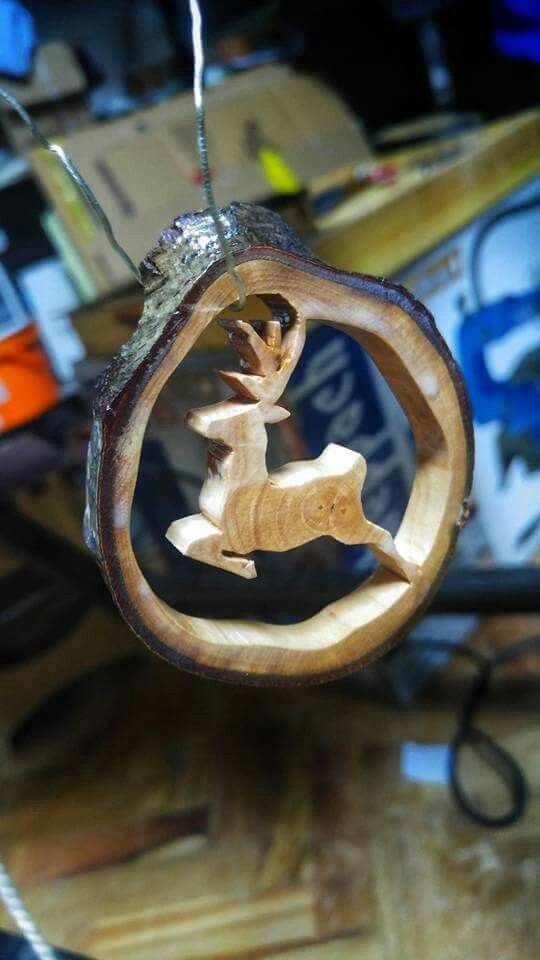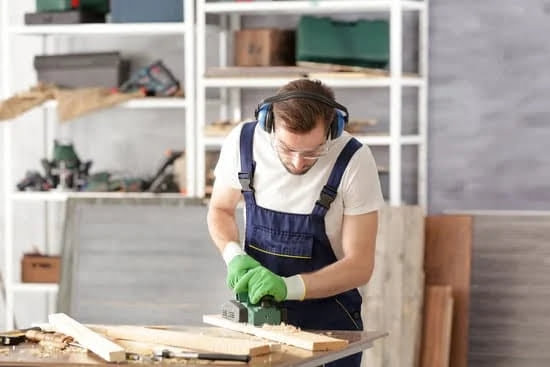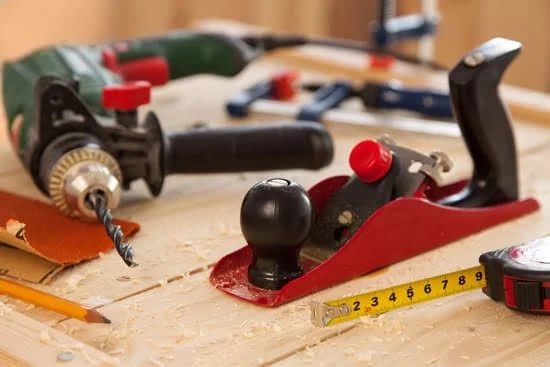If you’re a gun enthusiast and looking to showcase your firearms in style, then crafting a custom gun case is the perfect project for you. With the help of woodworking plans, you can create a beautiful and functional case that not only protects your guns but also adds a touch of artistry to your collection.
In this article, we will delve into the world of gun case woodworking, providing you with all the information and guidance you need to create your own masterpiece.
Wood selection is crucial when it comes to building a gun case. The type of wood you choose will not only determine the overall aesthetic appeal of your case but also its durability and longevity. We will guide you through the process of selecting the perfect material for your gun case, taking into consideration factors such as strength, grain patterns, and resistance to moisture and humidity.
Before getting started on your woodworking project, it’s important to have the necessary tools and equipment on hand. From basic hand tools like chisels and planes to power tools like table saws and routers, we will provide a comprehensive list of essential tools that every aspiring woodworker should have in their arsenal. Additionally, we will discuss safety precautions and techniques to ensure that your woodworking experience is enjoyable and injury-free.
With an introduction now complete, let’s dive into Chapter 2: The Importance of Choosing the Right Wood for Your Gun Case: A Guide to Selecting the Perfect Material.
The Importance of Choosing the Right Wood for Your Gun Case
Wood selection is a crucial aspect of crafting a gun case, as it not only impacts the aesthetic appeal but also the durability and performance of the final product. Choosing the right wood for your gun case involves considering factors such as stability, hardness, grain pattern, and color. In this section, we will provide a comprehensive guide on selecting the perfect material for your woodworking project.
Considerations for Stability
When choosing wood for a gun case, stability is of utmost importance. You want a wood type that is less likely to warp or shrink over time due to changes in humidity or temperature. Woods with low moisture content and good dimensional stability, such as maple or oak, are excellent choices.
Assessing Hardness
Since gun cases need to withstand potential shocks and impacts, choosing a wood species with adequate hardness is vital. Woods like walnut or cherry are known for their hardness and durability, making them suitable options for firearm storage.
The Influence of Grain Pattern
The grain pattern of the chosen wood can greatly affect the appearance of your gun case. Straight grains offer a more formal and traditional look while woods with unique grain patterns like burlwood or birdseye maple add visual interest. Consider selecting woods based on the overall aesthetic you desire.
Considering Color
The color of the wood can be an important factor in creating a visually appealing gun case. From light-colored woods like ash or birch to darker options like mahogany or ebony, there are various choices that can complement different interior design styles. Consider how the color of your chosen wood will harmonize with other elements in your space.
By carefully considering these factors – stability, hardness, grain pattern, and color – you can confidently choose the perfect wood species for your gun case woodworking project. Remember that each type of wood has its own unique characteristics and properties, so it’s essential to consult woodworking experts or reference guides when making your final decision.
Getting Started
Choosing the Right Tools
When it comes to crafting gun cases with woodworking plans, having the right tools and equipment is crucial for success. The following are some essential tools that you will need:
- Measuring Tools: A tape measure and a combination square are essential for accurate measurements during the construction process.
- Hand Tools: Basic hand tools such as a hammer, chisels, screwdrivers, and a set of clamps will come in handy for various tasks throughout the project.
- Power Tools: Power tools can greatly speed up the building process and help create precise cuts. Some recommended power tools include a table saw, miter saw, router, drill press, and orbital sander.
- Safety Equipment: It is important to prioritize safety while working with power tools. Protective equipment such as safety goggles, ear protection, and dust masks are necessary precautions to take.
Setting Up Your Workspace
Before starting your woodworking project, it is important to establish an organized and functional workspace. Here are some tips to consider:
- Adequate Space: Ensure that you have enough space in your workshop or garage to accommodate both your project materials and your workspace.
- Good Lighting: Proper lighting is crucial for precision work. Make sure you have adequate lighting fixtures or natural light sources in your workspace.
- Tool Storage: Investing in tool storage solutions such as pegboards or wall-mounted cabinets will help keep your tools organized and easily accessible.
- Workbench Setup: Set up a sturdy workbench where you can securely hold your materials and use power tools safely.
Maintaining Your Tools
Taking care of your woodworking tools is essential for their longevity and continued effectiveness. Here are some maintenance tips:
- Cleaning: Regularly clean off any debris or sawdust from your tools using compressed air or a brush.
- Lubrication: Apply lubricant to moving parts and cutting edges to prevent rust and ensure smooth operation.
- Sharpening: Keep your cutting tools sharp by regularly honing or sharpening them. Dull tools can be dangerous and lead to poor results.
- Storage: Properly store your tools in a dry and climate-controlled environment to prevent rust or other damage.
By selecting the right tools, setting up an efficient workspace, and maintaining your equipment, you will be well-equipped to embark on your gun case woodworking project with confidence and success.
Understanding the Measurements
When it comes to crafting a gun case with woodworking plans, understanding the measurements is crucial in order to ensure a proper fit and functionality. Whether you are building a simple rifle case or an intricate display cabinet, accurate measurements are the foundation of a successful woodworking project. Here is a guide on how to properly measure and plan the dimensions of your gun case:
- Determine the size: Start by deciding on the overall dimensions of your gun case. Consider the length, width, and height required to accommodate your specific firearm(s), accessories, and any additional storage needs. It’s important to choose dimensions that not only provide enough space for your firearms but also fit well within your available space.
- Measure carefully: Use a tape measure or ruler to take precise measurements of each component of your gun case. This includes the outer dimensions as well as any dividers, shelves, or compartments you plan to incorporate. Be sure to account for any necessary clearance or spacing requirements.
- Consider ergonomics: While accuracy is important, it’s also crucial to think about ergonomics when planning the dimensions of your gun case. Consider factors such as accessibility, ease of use, and weight distribution when determining shelf heights, handle placement, and other functional aspects.
Pro Tips
- Take multiple measurements: To ensure accuracy, measure each dimension at least twice and double-check your calculations before making any cuts.
- Account for material thickness: Remember that the thickness of wood panels can affect final dimensions. Factor in material thickness when planning your cuts and joinery techniques.
By carefully measuring and planning the dimensions of your gun case before beginning construction, you can ensure that it will be functional and aesthetically pleasing while meeting all your storage needs. Taking the time to accurately measure not only saves time during construction but also reduces the risk of costly mistakes that may require rework or replacement materials later on.
Exploring Different Styles and Designs
Gun enthusiasts who are also woodworking enthusiasts may find joy in combining their passions by crafting their own gun cases with woodworking plans. One of the most exciting aspects of this craft is the ability to explore a wide range of different styles and designs for gun cases.
From traditional and classic designs to more modern and unique styles, there are endless possibilities when it comes to creating a one-of-a-kind gun case that perfectly suits your personal preferences.
Whether you prefer a sleek and minimalist design or a more ornate and decorative look, there are woodworking plans available for every taste. Traditionalists may opt for wood species like walnut or cherry, which can give a timeless and elegant feel to the gun case. Those looking for a more contemporary aesthetic may choose lighter woods like maple or birch, which can bring a refreshing and modern touch to the design.
In addition to different wood species, there are also various designs to consider when planning your gun case project. Some popular options include:
- Classic rifle cases with clean lines and minimal embellishments.
- Display cases with glass panels or doors to showcase firearms.
- Vintage-style cases with intricate detailing and hardware.
- Customizable cases with compartments for accessories or ammunition storage.
By exploring different styles and designs, you can find inspiration for your own unique creation. Consider factors such as the function of the case (will it be used for display purposes or transportation?), the number of firearms it needs to accommodate, and any special features or details you would like to incorporate.
| Style/Design | Description |
|---|---|
| Classic Rifle Case | A traditional design with clean lines, minimal embellishments, and a focus on functionality. |
| Display Case | Features glass panels or doors to showcase firearms, often with additional compartments for accessories. |
| Vintage-Style Case | Incorporates intricate detailing and hardware reminiscent of antique gun cases. |
| Customizable Case | Allows for personalization with compartments for accessories, ammunition storage, or other unique features. |
Remember that the design you choose should not only be aesthetically pleasing but also functional and durable. It’s important to take into consideration the specific needs of your firearms and any necessary security features.
Exploring different styles and designs is just one of the exciting stages in the process of crafting gun cases with woodworking plans. Once you have chosen a design that speaks to you, the next step is to gather the essential tools and equipment needed to bring your vision to life.
Step-by-Step Construction
Building a gun case using woodworking plans is a rewarding project that allows you to showcase your craftsmanship and create a custom storage solution for your firearms. In this section, we will guide you through the step-by-step construction process of building a gun case using woodworking plans.
Gather Your Materials and Tools
Before you begin construction, make sure you have all the necessary materials and tools at hand. The materials you will need include high-quality wood boards, plywood, screws, nails, hinges, and any additional decorative elements you plan to incorporate into your design. Additionally, gather the following tools:
- Measuring tape and ruler: Accurate measurements are crucial for ensuring proper fit and functionality.
- Saw: A table saw or circular saw will be useful for cutting the wooden boards to the desired dimensions.
- Drill: You’ll need a drill with various drill bits for making pilot holes and installing screws.
- Router: Depending on your design plan, a router can help create grooves or decorative edges.
- Sandpaper and sanding block: Smooth out rough edges and surfaces with sandpaper of different grits.
- Clamps: Holding pieces together securely while assembling is essential for stability.
- Nail gun or hammer: Choose the appropriate tool for attaching nails if necessary.
- Wood glue: Use wood glue to reinforce joints and ensure durability.
The Construction Process
- Start by measuring and cutting the main panels of the gun case according to your woodworking plans. This includes the front panel (with provision for doors if desired), back panel, side panels, top panel, bottom panel, and any shelving or compartments.
- Create dado slots or rabbet joints where needed for joining panels securely together. A router can be used to create these joints, ensuring a snug fit.
- Assemble the main body of the gun case using clamps and wood glue. Make sure all edges are aligned properly before securing with screws or nails. Follow your woodworking plans closely throughout this process to avoid mistakes.
- Install any additional features such as doors, compartments, or shelves according to your design plan. This may require precise cutting and fitting of smaller pieces within the main body of the gun case.
- Sand the entire gun case to smooth out any rough surfaces or edges. Start with a coarse grit sandpaper and gradually move to finer grits for a polished finish.
- Apply a protective finish of your choice, such as varnish or lacquer, to enhance the appearance and durability of the wood. Follow manufacturer instructions for application and drying times.
By following these steps and referencing detailed woodworking plans, you can successfully construct a gun case that meets your specific needs and showcases your craftsmanship. Remember to take your time, measure accurately, and prioritize safety throughout the construction process.
Finishing Touches
When it comes to crafting a gun case with woodworking plans, the finishing touches are what truly make it a masterpiece. Adding stains, finishes, and decorative details can enhance the aesthetics of your gun case and make it a stunning display piece that complements your firearm collection. In this section, we will explore various techniques and options for adding those final touches to your woodworking project.
Stains are an excellent way to bring out the natural beauty of the wood while adding depth and richness to its appearance. There are many types of wood stains available on the market, ranging from transparent to opaque. It is essential to select a stain that complements both your chosen wood material and the overall design aesthetic you are aiming for.
For example, if you want a rustic look, you may opt for a darker stain with pronounced grain patterns. Conversely, if you prefer a more modern or sleek appearance, a lighter and more uniform stain may be more suitable.
Once you have applied the stain and allowed it to dry thoroughly according to the manufacturer’s instructions, it is time to apply a finish. The finish protects the wood from damage while adding shine or luster. One popular finish option for gun cases is polyurethane because of its durability and resistance to scratches.
However, there are other finishes available such as lacquer or varnish that provide different levels of sheen and protection. Ultimately, the choice of finish depends on personal preference and desired visual effect.
In addition to stains and finishes, incorporating decorative details can elevate the overall look of your gun case even further. These details can include custom engravings or inlays that add a personalized touch or intricate carvings that showcase exquisite craftsmanship. The choice of decorative details will depend on your skill level as well as the tools and equipment at your disposal.
By adding stains, finishes, and decorative details to your gun case, you can create a beautifully crafted piece that not only showcases your firearm collection but also adds a touch of artistry to your space. The possibilities are endless, and the final result will be a unique and eye-catching woodworking masterpiece.
| Technique | Description |
|---|---|
| Stains | Adds depth and richness to the wood’s appearance while enhancing its natural beauty |
| Finishes | Protects the wood from damage and adds shine or luster to the overall look of the gun case |
| Decorative Details | Incorporates custom engravings, inlays, or carvings that personalize the gun case and showcase craftsmanship |
Safety and Security
When it comes to crafting a gun case, safety and security are of utmost importance. Proper storage and secure locking mechanisms are essential to ensure the protection of your firearms. In this section, we will explore the various ways you can incorporate locks and storage features into your gun case to provide maximum safety and security.
One key aspect to consider when incorporating locks into your gun case is the type of lock that best suits your needs. There are several options available, including keyed locks, combination locks, electronic locks, and fingerprint recognition locks. Keyed locks offer simplicity and reliability, while combination locks provide added security without the need for keys. Electronic locks and fingerprint recognition locks offer advanced technology for quick access while maintaining high security standards.
In addition to locks, it is crucial to have proper storage features in your gun case. This includes designated compartments or slots for each firearm, ensuring they are securely held in place during transport or storage. Some gun cases also include customizable foam inserts that can be cut to fit each specific firearm, providing additional protection against damage.
Furthermore, ventilation is an important consideration when incorporating storage features into your gun case. Proper airflow helps prevent moisture buildup and condensation inside the case, which can cause damage to your firearms over time. Installing vents or using breathable materials can help maintain optimal conditions within the case.
By prioritizing safety and security in your gun case design, you can confidently store your firearms knowing they are protected from unauthorized access and potential damage. Incorporating appropriate locking mechanisms as well as thoughtful storage features will not only provide peace of mind but also contribute to the longevity of your woodworking masterpiece.
Maintenance and Care Tips for Longevity
Wooden gun cases require regular maintenance and care to ensure their longevity and preserve their aesthetic appeal. By properly protecting and preserving your woodworking masterpiece, you can enjoy its beauty for years to come. Here are some essential maintenance and care tips to keep in mind.
Firstly, it is crucial to regularly clean your wooden gun case. Dust and dirt can accumulate on the surface, potentially scratching or damaging the wood over time. Use a soft, lint-free cloth or a brush to gently remove any debris from the case. Avoid using harsh chemicals or abrasive cleaners that could strip away the finish or damage the wood.
To protect your wooden gun case from moisture and humidity, it is recommended to apply a high-quality wood finish or sealant. This will create a protective barrier that repels water and prevents warping or swelling of the wood. Before applying any finish, ensure that the surface is clean and dry. Follow the manufacturer’s instructions for proper application techniques and drying times.
In addition to sealing the wood, it is advisable to periodically inspect your gun case for any signs of damage or wear. Check for cracks, splits, loose joints, or any other structural issues that may compromise its integrity. If you notice any problems, address them promptly to prevent further damage. Regularly tightening screws or hardware can also help ensure that your gun case remains sturdy and secure.
Proper storage is another essential aspect of maintaining a wooden gun case. Keep it in a cool, dry environment with stable humidity levels to prevent excessive expansion or contraction of the wood. Avoid placing the case near direct sunlight, as prolonged exposure can fade the color and degrade the finish.
By following these maintenance and care tips for your wooden gun case, you can protect it from damage caused by environmental factors and ensure its longevity as an exquisite woodworking masterpiece. Remember to regularly clean, seal, inspect, and store your gun case properly so that you can continue enjoying its beauty for generations to come.
Conclusion
In conclusion, crafting gun cases through woodworking is not only a practical way to store and secure firearms but also an opportunity to showcase the artistry and skill of woodworking.
By selecting the right type of wood, utilizing essential tools and equipment, understanding proper measurements, exploring different styles and designs, following step-by-step construction guides, applying finishing touches, ensuring safety and security features, and practicing maintenance and care tips, gun owners can create beautiful and functional pieces that will protect their firearms for years to come.
When it comes to finding reliable plans for gun case woodworking projects, there are several options available. Online platforms dedicated to woodworking often offer a wide range of plans for various skill levels. These plans include detailed instructions alongside illustrations or photographs to guide even novice woodworkers through the process.
Woodworking magazines and books are also valuable resources for obtaining high-quality plans. These sources often feature expert tips and tricks from experienced craftsmen who have perfected their techniques over time.
Additionally, joining local woodworking clubs or attending workshops can provide access to a community of like-minded individuals who can offer guidance on finding reliable plans or share their own proven designs. Collaborating with others in this way not only enhances skills but also fosters a sense of camaraderie within the woodworking community.
Frequently Asked Questions
How deep should a gun cabinet be?
The depth of a gun cabinet depends on the size and type of firearms it needs to accommodate. In general, a gun cabinet should be deep enough to comfortably hold the longest firearm you own, with some additional space for accessories such as scopes or magazines.
It is recommended to have a depth of at least 14-18 inches to ensure proper storage. However, if you have longer guns or plan to add more firearms in the future, you may need a deeper gun cabinet.
What is the best wood for a gun case?
When it comes to choosing the best wood for a gun case, several factors should be considered. First and foremost, it is crucial to opt for a sturdy and durable wood that can withstand the weight of firearms and provide adequate protection.
Hardwoods like oak, cherry, maple, and walnut are popular choices due to their strength and natural beauty. These woods can also be finished with varnish or lacquer to enhance their appearance while providing an extra layer of protection against moisture and scratches.
What kind of wood are gun cabinets made of?
Gun cabinets are typically made from various types of hardwoods that offer durability and strength. Commonly used woods include oak, cherry, maple, walnut, mahogany, and pine. Oak is especially preferred for its sturdiness and resistance to wear. Cherry is often chosen for its beautiful reddish-brown hue that adds elegance to gun cabinets.
Maple provides both strength and natural lightness in coloration while being easily customizable with stains or finishes. Walnut is another favored option due to its rich dark brown color and fine grain pattern that gives gun cabinets a luxurious look. Ultimately, the choice of wood depends on personal preference and desired aesthetics while ensuring long-lasting quality construction for the gun cabinet.

Hi everyone! I’m a woodworker and blogger, and this is my woodworking blog. In my blog, I share tips and tricks for woodworkers of all skill levels, as well as project ideas that you can try yourself.





